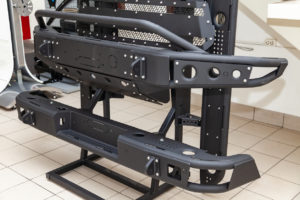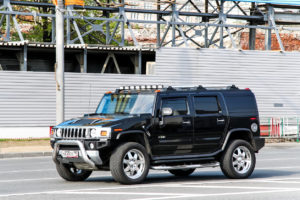SUV’s Contribute to and Cause Otherwise Avoidable Injuries
Nearly 6,600 pedestrians perished on U.S. roadways in 2019, according to a Governors Highway Safety Association (GHSA) figure notably higher than its 2018 counterpart.
The problem? Primarily it is the predominance of – and popularity surrounding – sport-utility vehicles (SUVs). If you are an SUV owner, recognize the size and potential damage that can be done by an SUV. Also understand by owning an SUV, you take on additional responsibility for blind spots caused by the design of SUV’s.
“In the past 10 years, the number of pedestrian fatalities on our nation’s roadways has increased by more than 50%,” GHSA Executive Director Jonathan Adkins said in a news release titled “New Projection: 2019 Pedestrian Fatalities Highest Since 1988.” “This alarming trend signifies that we need to consider all the factors involved in this rise, identify the high-risk areas, allocate resources where they’re needed most, and continue to work with local law enforcement partners to address the chronic driver violations that contribute to pedestrian crashes.”
Pedestrians accounted for 17 percent of all traffic-related deaths in 2019. In 2018, pedestrians accounted for 12 percent of all traffic-related deaths. In the last decade, the number of traffic-related fatalities not involving pedestrians has stayed the course, increasing by two percent. Several factors are spiking the statistics, among them the reality that pedestrians are two times more likely to be killed when struck by an SUV as opposed to a car.
“Although advancements in motor vehicle safety and technology have increased survivability for vehicle occupants involved in crashes, pedestrians remain just as susceptible to sustaining serious or fatal injuries when struck by a motor vehicle,” according to the news release.
Richard Retting, author of the GHSA’s “Spotlight on Highway Safety” report, struck a similarly somber tone.
“Each year, thousands of additional people are dying in pedestrian crashes compared to a decade ago.” Retting said in the news release. “Following 45 years of declining pedestrian fatalities, there has been a complete reversal of progress. Pedestrians are at an inherent disadvantage in collisions, and we must continue to take a broad approach to pedestrian safety.”
One such approach could involve following the money. It is no secret SUVs have palpable profit margins that make the automobile manufacturers in Detroit fat and the automobile agencies overseen by the federal government happy. Of every three vehicles sold in the United States, two are SUVs, minivans or trucks.
“The National Highway Traffic Safety Administration (NHTSA) manages automotive design through the Federal Motor Vehicle Safety Standards (FMVSS) and the New Car Assessment Program, but it has not leveraged either to protect vulnerable street users (which drew a recent rebuke from the General Accountability Office),” states a Bloomberg article titled “How Cities Can Reclaim Their Streets From SUVs.” “If city leaders want to see fewer of these dangerous, hulking vehicles on their streets in the coming years, they’ll need to take action themselves.”
Even though the NHTSA manages automotive design, city leaders can pass laws regulating aftermarket parts and accessories such as wheel rims, window tints and bull bars.
“Bull bars offer modest protections to the auto body in the event of a collision, but many people get them simply because they like the appearance,” the Bloomberg article states. “That would be fine, except for the fact that bull bars pose a serious safety risk to a pedestrian or cyclist who collides with one. Automobile bumpers are designed to absorb impact, but bull bars don’t let the bumpers do their job. Instead, as one academic study found, the devices “stiffen the front end of vehicles and interfere with the vital shock absorption system…These devices therefore significantly alter the collision dynamics of vehicles, resulting in an increased risk of pedestrian injury and mortality in crashes.” Since bull bars aren’t covered by FMVSS, American cities could ban their installation as a safety hazard (they’ve been illegal in Europe for years).”
The Home Deport sells bull bars for less than $300.

Stand for demonstration of car body elements reinforced for off-road and made of metal, such as bumper, steps and black grille in the workshop for the installation and tuning of SUV vehicles.
Bull bars exist for use in the back country; to protect the vehicle from hitting large animals, tress or driving off road. They have no legitimate or meaningful use while driving your SUV around urban areas and on paved roads.
“Nothing says ‘bad to the bone’ like the ARIES Big Horn 4″ bull bar,” its Web site boasts. “This front-end giant boasts a hefty 4″ diameter tube to give your truck a bold look with the toughness to back it up. Each Big Horn bull bar offers easy customization options with its pre-drilled light mounting holes. The bull bar is also equipped with a brushed stainless steel skid plate.”
Also exacerbating the dangers of SUVs are the massive blind spots directly in front of the hood. The blind spots have contributed to the deaths of hundreds of children and caused thousands upon thousands of otherwise avoidable injuries.
“Can you even imagine killing your own child because you couldn’t see them?” asks Janette Fennell, of KidsAndCars.org, in a WTHR-TV article title “13 Investigates: Millions of vehicles have unexpected, dangerous front blind zone.” “I think very few people understand that this blind zone exists, and there’s a huge danger when these vehicles start moving forward.”
Share This



